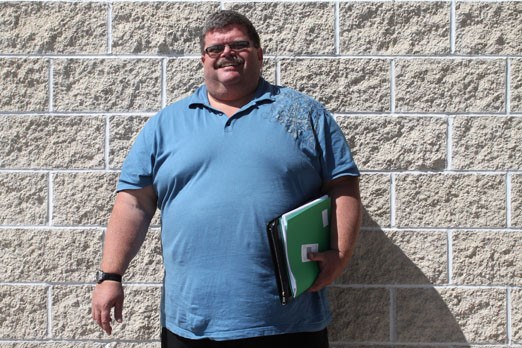George Saarinen wants to meet his grandchildren one day.
He also wants to enjoy a game from the stands at the Fort William Gardens, sit on an airplane without a belt extension or just simply shop for jeans like anyone else. But at nearly 430 pounds, these things are nearly impossible.
As an ex-funeral director, Saarinen has seen many people go before their time because of obesity-related diseases. Now 53, he’s decided he’s not going to be one of them.
In an effort to realize the goal, Saarinen has decided to undergo a sleeve gastrectomy, which is a surgical procedure that will remove nearly 80 per cent of his stomach and possibly change his life.
“I want to see my children have children, I want to be around for a while. I want to enjoy retirement.”
Battling weight his whole life, Saarinen says his biggest issue has always been eating away his emotions.
He would eat if he was upset. He would eat if he was feeling guilty or anxious. Then there have been the diets. Saarinen has tried everything from Weight Watchers to cabbage soup.
“A lot of people eat for the wrong reasons. I can certainly say mine was emotion,” he says. “I get winded even trying to walk around the block…I can’t do that anymore.”
Saarinen is sitting outside of the Thunder Bay Regional Bariatric Care Centre where, after more than a year of waiting, he’s just had a teleconference with his surgeon.
For every 300 people who apply for either the sleeve procedure or gastric bypass, about 100 will get to surgery. Only 80 people from the region have been sent to Hamilton where the surgery is done since the Thunder Bay preparation centre opened more than two years ago.
George started asking his family doctor nearly eight years ago to refer him, but she refused until January 2011. Since then, he’s met with more than a dozen people from dieticians to psychologists to determine whether he’s mentally and physically ready.
“You really have to want this if you want to succeed,” Saarinen said. “It’s not something that’s handed to you on a silver platter.”
Starting three weeks before the surgery, patients start an Optifast diet. The liquid only provides 900 calories per day. On the first day after surgery, Saarinen will only be able to drink 30 millilitres of water and that might take him an hour.
The average stomach is the size of a football. The surgery will make his the size of a golf ball. Then there are the normal risks of any surgery such as infection or blood clots.
Despite that, Sarrinen considers the risks to himself and the health-care system in general if he doesn’t go for it.
Recent studies have shown that obesity costs the Canadian economy up to $7 billion, nearly $2 billion in direct health care costs, every year.
“I’m willing to take some risks instead of facing years of morbid obesity,” he says.
Then there are the results.
Not even one per cent of patients will see an average Body Mass Index because of the surgery.
Saarinen’s also been warned that some people gain the weight back. His doctor even told him of one case where a person’s stomach ruptured because they continued to overeat after having the procedure done.
But nothing is going to deter Saarinen.
He, like those who work at the centre, stress the surgery is just one part of a complete lifestyle change.
Just getting to the point in the process where he is right now, waiting for a surgery date, is an accomplishment.
“It’s like climbing Mount Everest. I’m almost there,” he said.
